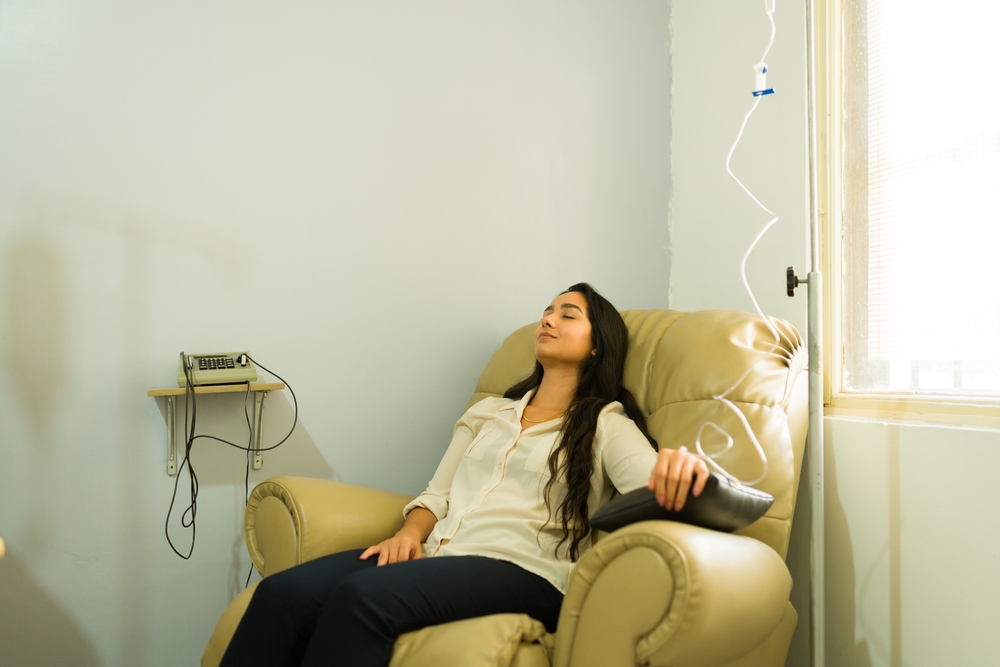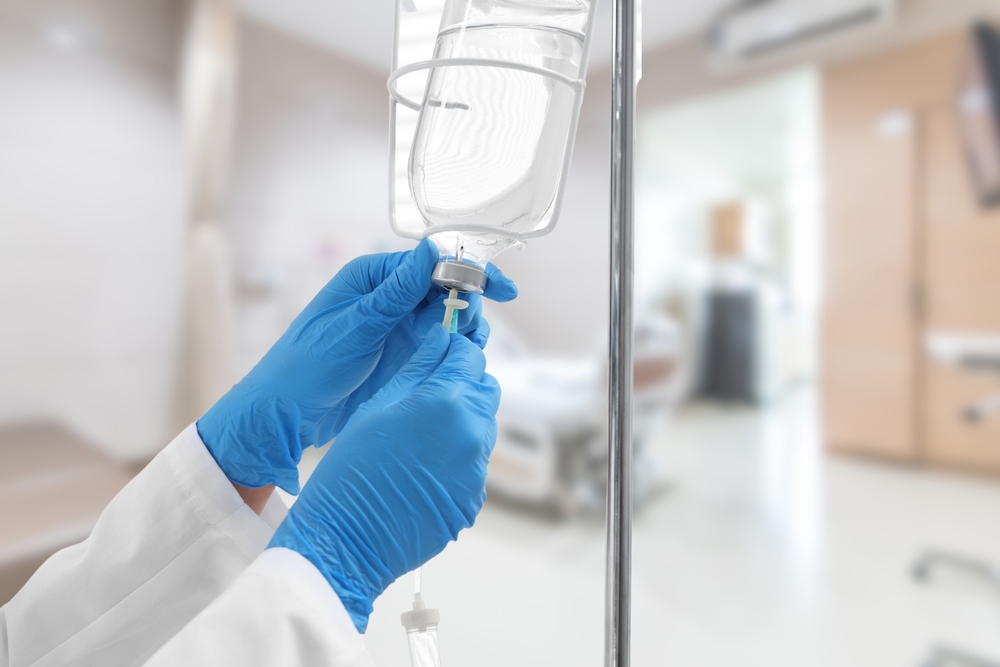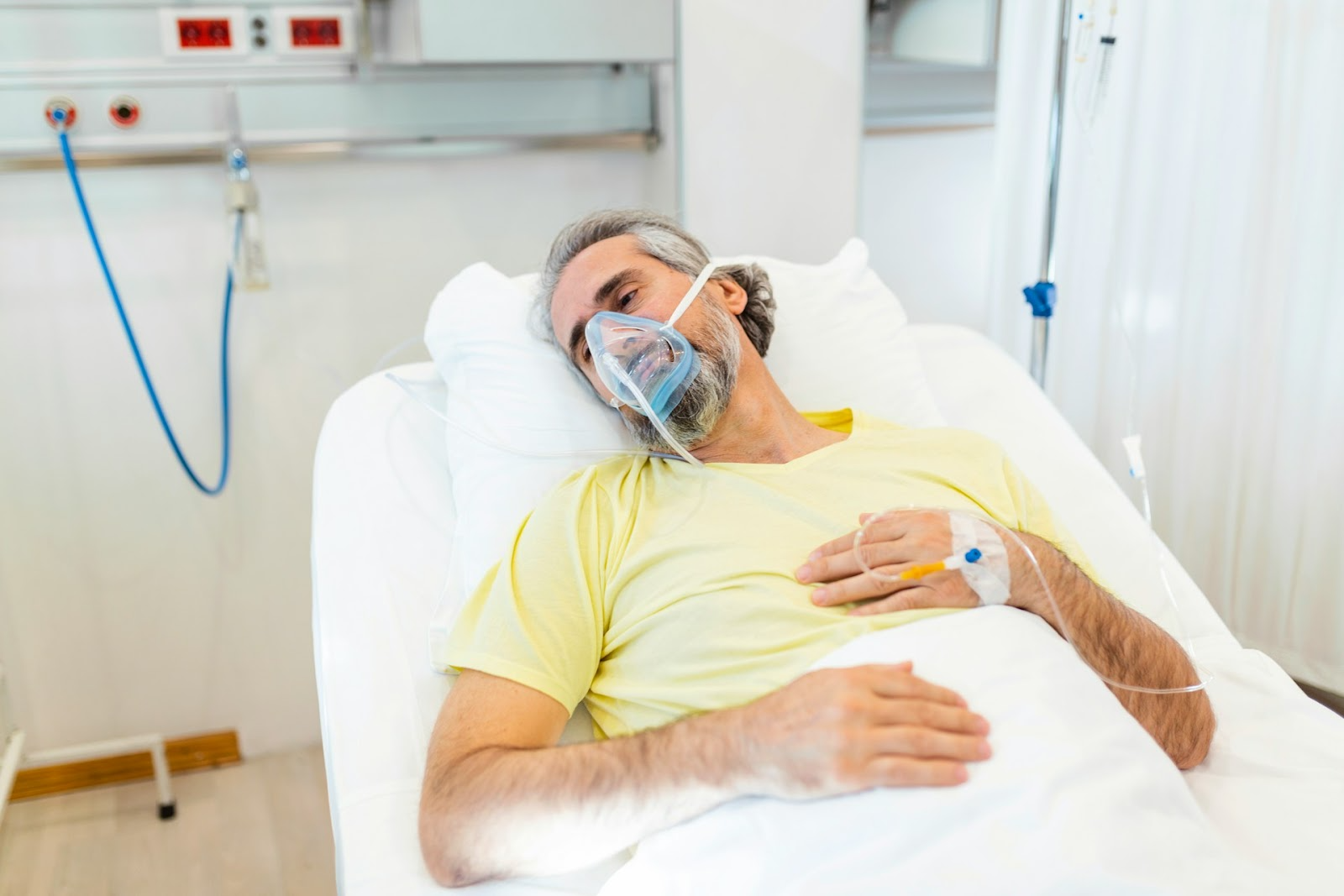Vomiting can leave you feeling weak, dehydrated, and uncertain about your next steps. This guide provides you with practical, step-by-step instructions to safely rehydrate your body after throwing up.
Proper rehydration isn't just about drinking water - it's a crucial process that helps:
- Restore essential fluids lost during vomiting
- Replenish vital electrolytes
- Support your body's recovery process
- Prevent complications from dehydration
Watch for these warning signs of dehydration:
- Intense thirst
- Dark-colored urine
- Dry, sticky mouth
- Reduced urination
- Headache or dizziness
- Fatigue
- Decreased skin elasticity
- Sunken eyes
Your body loses significant amounts of water and essential minerals when you vomit. Without proper rehydration, you risk prolonged illness and potential complications. This guide walks you through the safest methods to rehydrate, from choosing the right fluids to knowing when to seek medical help.
The Importance of Electrolytes
Rehydration isn't solely about replacing lost fluids; it's also about replenishing essential electrolytes such as sodium and potassium. These minerals play a critical role in maintaining your body's fluid balance and overall function. While drinking electrolyte-infused drinks can help, IV therapy is another effective option for rapid rehydration and electrolyte replenishment.
When Oral Supplements Aren't Enough
In some cases, oral supplements may not suffice for effective rehydration. If you're struggling to keep fluids down or need a quicker recovery, IV therapy might be the best solution. This method allows for direct absorption of fluids and nutrients into your bloodstream, bypassing the digestive system entirely.
Tailored IV Treatments for Optimal Recovery
At Livity Wellness, we provide specialized Replenish IV Therapy designed to boost your vitality by enhancing hydration and overall health. Our tailored IV treatments ensure that your body receives the necessary fluids and nutrients it needs for a swift recovery.
Advanced Treatments for Cellular Health
For those looking to enhance their recovery process further, our NAD Supercharge IV Therapy offers advanced treatments aimed at boosting cellular health. This therapy not only aids in hydration but also supports overall health by enhancing cellular repair and increasing energy levels.
Remember: The key to successful rehydration lies in taking small, frequent sips rather than large amounts at once. This approach helps prevent triggering additional vomiting episodes while allowing your body to absorb the fluids it needs.
Understanding Dehydration After Vomiting
Vomiting triggers a rapid loss of essential fluids and electrolytes from your body. Each episode expels stomach contents, including water, stomach acid, and partially digested food. This sudden loss disrupts your body's delicate fluid balance, leading to dehydration.
The Role of Electrolytes
Your body relies on specific electrolytes - sodium, potassium, and chloride - to maintain vital functions:
- Sodium: Controls blood pressure and nerve function
- Potassium: Regulates heart rhythm and muscle contractions
- Chloride: Maintains proper fluid balance and digestion
Effects of Vomiting on the Body
When you vomit, you lose these crucial elements, causing:
- Muscle weakness
- Irregular heartbeat
- Decreased blood pressure
- Impaired kidney function
- Digestive system disruption
Complications of Untreated Dehydration
Untreated dehydration can escalate into severe health complications:
- Mild Dehydration:
- Dry mouth
- Decreased urine output
- Headache
- Fatigue
- Severe Dehydration:
- Rapid heartbeat
- Confusion
- Fainting
- Seizures
- Organ failure
The Vicious Cycle of Vomiting and Dehydration
Your body's fluid loss during vomiting isn't limited to water - you're also losing essential minerals and electrolytes. This combination creates a domino effect: the more you vomit, the more dehydrated you become, potentially triggering additional nausea and vomiting. This cycle makes prompt rehydration crucial for breaking the pattern and preventing serious health complications.
Potential Therapies for Rehydration Support
In such scenarios, therapies like Alpha Lipoic Acid IV can provide powerful antioxidant support to reduce inflammation and aid overall wellness. Additionally, Meyers Cocktail IV Therapy could be beneficial as it includes a blend of vitamins and minerals that can help replenish what your body has lost during vomiting.
Seeking Professional Help in South Florida
For those residing in South Florida, seeking professional help from wellness centers such as Livity Wellness can offer cutting-edge treatments not only for rehydration but also for achieving radiant skin through their anti-aging solutions. Moreover, they provide mobile IV therapy services which can be particularly useful for busy professionals who may not have the time to visit a clinic regularly.

The Rehydration Process: A Step-by-Step Guide
Restoring your body's fluid balance after vomiting requires a careful, systematic approach. Let's break down the essential steps to help you rehydrate safely and effectively.
1. Starting Rehydration with Clear Liquids
The first 24 hours after vomiting are crucial for proper rehydration. Start with these proven methods:
The 15-Minute Rule
- Take one small sip of water every 15 minutes
- Wait to see if your stomach tolerates the fluid
- Gradually increase the amount if no nausea occurs
Best Clear Liquids for Rehydration
- Water (room temperature)
- Ice chips to suck on
- Clear broths (low sodium)
- Weak tea (without caffeine)
- Coconut water (natural electrolytes)
Oral Rehydration Solutions (ORS)
Commercial ORS products contain specific ratios of:
- Sodium
- Potassium
- Glucose
- Chloride
These elements work together to help your body absorb water more effectively than plain water alone.
Homemade Rehydration Solution Recipe
- 1 liter of clean water
- 6 level teaspoons of sugar
- 1/2 teaspoon of salt
Timing Your Intake
Your body needs time to adjust after vomiting. Follow this timeline:
- First 2 hours: No fluids
- Hours 2-4: Ice chips only
- Hours 4-6: Small sips of clear liquids
- After 6 hours: Gradually increase fluid intake
Warning Signs to Watch
- Nausea returns
- Stomach cramping
- Continued vomiting
- Difficulty keeping fluids down
Tips for Successful Rehydration
- Keep room temperature consistent
- Stay in an upright position while drinking
- Avoid lying flat for 30 minutes after sipping fluids
- Use a straw to control intake volume
- Track your fluid intake
In some cases, especially when dealing with severe dehydration or other health issues, it might be beneficial to seek professional medical assistance. Comprehensive telehealth and in-person care services that include hydration IV drip therapy could provide the necessary support during such times. Additionally, exploring options like the Lity Detox Program can further assist in purifying your system and rejuvenating your health.
Remember, successful rehydration is a process that requires patience and careful monitoring of your body's responses.
2. Replenishing Electrolytes Post-Vomiting
Electrolyte replenishment plays a vital role in your recovery after vomiting. Your body loses essential minerals like sodium, potassium, and chloride during episodes of vomiting, making it crucial to restore these elements for proper bodily functions.
Recommended electrolyte-rich options:
- Commercial oral rehydration solutions (ORS)
- Sports drinks (diluted 50/50 with water)
- Coconut water
- Diluted apple juice (mix equal parts water and juice)
- Clear broths
Tips for electrolyte replenishment:
- Take small sips every 10-15 minutes
- Avoid undiluted sports drinks (too concentrated)
- Room temperature fluids are easier on your stomach
- Steer clear of caffeine-containing beverages
For adults and older children, sports drinks provide an accessible option for electrolyte replacement. These beverages contain balanced proportions of sodium and potassium, helping restore your body's mineral balance. Diluting these drinks reduces their sugar content while maintaining beneficial electrolyte levels.
Natural alternatives like coconut water offer potassium-rich hydration without artificial ingredients. Clear broths deliver sodium and other minerals in an easily digestible form.
Children under 12 require special attention. Pediatric electrolyte solutions provide age-appropriate mineral concentrations. Regular monitoring ensures proper hydration - watch for improved energy levels, clearer urine, and increased skin elasticity as positive signs of recovery.
In some cases, especially when dehydration is severe, mobile IV therapy can be a beneficial option. This treatment not only helps in replenishing electrolytes but also boosts energy and enhances recovery.
Warning signs requiring medical attention:
- Inability to keep fluids down
- Dark or decreased urination
- Severe dizziness
- Rapid heartbeat
- Extreme thirst despite drinking fluids
If you're experiencing recurrent vomiting or severe dehydration symptoms, it's crucial to seek medical help promptly. Additionally, if you find yourself frequently falling ill or needing to recover from illnesses, consider exploring options like Immune Blast IV Therapy which can strengthen your immune system and enhance recovery.
3. Gradual Introduction of Bland Foods After Rehydration
Once your body tolerates clear liquids, introducing bland foods becomes the next crucial step in your recovery process. The BRAT diet serves as a reliable foundation for this transition:
- Bananas: Rich in potassium and easy to digest
- Rice: Plain white rice helps bind stool and provides gentle energy
- Applesauce: Offers natural sugars and pectin
- Toast: Plain, without butter or spreads
Your first meal should be small, about 1/2 cup of food. Wait 2-3 hours to ensure your stomach can handle it before trying more. Here's a progression guide for food reintroduction:
First 24 Hours
- Plain crackers
- White toast (no butter)
- Pretzels
- Plain pasta
Next 24-48 Hours
- Plain yogurt
- Cooked carrots
- Skinless chicken breast
- Baked potato (no toppings)
Foods to Avoid
- Dairy products (except plain yogurt)
- Fried or greasy foods
- Spicy dishes
- Raw vegetables
- Citrus fruits
- Caffeine
Listen to your body during this process. If nausea returns or you experience stomach discomfort, return to clear liquids. Each person's recovery timeline varies - some might progress through these stages in 24 hours, while others need several days. For more detailed advice on reintroducing foods, consider exploring this resource.
Monitoring Dehydration Levels During Recovery
Recognizing severe dehydration signs is crucial in determining when home remedies aren't sufficient. Your body sends clear signals when it needs immediate medical attention.
Watch for these critical dehydration symptoms:
- Extreme thirst and dry mouth
- Little to no urination for 8+ hours
- Dark yellow or amber-colored urine
- Rapid breathing or heart rate
- Sunken eyes
- Decreased skin elasticity
- Dizziness upon standing
- Confusion or irritability
- Low blood pressure
Seek immediate medical care if you experience:
- Blood in vomit or stool
- Severe abdominal pain
- Inability to keep liquids down for 24+ hours
- Fever above 103°F (39.4°C)
- Signs of severe dehydration despite following rehydration steps
Special considerations for specific groups:
Children and Infants
- No tears when crying
- Dry diapers for 4-6 hours
- Listlessness or unresponsiveness
- Sunken soft spot on top of the head
Elderly Adults
- Decreased urine output
- Low blood pressure
- Mental status changes
- Weakness or fatigue
Regular monitoring of these symptoms helps prevent complications from severe dehydration. Track your fluid intake and output, noting any changes in your body's response to rehydration efforts. A medical professional can provide appropriate treatment when home care proves insufficient.
In cases where dehydration is caused by excessive alcohol consumption, Morning After IV Therapy can offer fast hangover relief, helping you recover quickly by alleviating hangover symptoms, rehydrating, and restoring energy levels.
For a more general approach to improving hydration levels, IV Hydration Therapy is a quick and effective way to boost hydration and energy levels. It's worth considering if you're seeking an efficient solution for your wellness needs.
If you're looking for a method to enhance your energy levels post-recovery, the Energy Boost IV Therapy at Livity Wellness can help revitalize your energy, improve mental clarity, and support overall vitality with tailored treatments.
Lastly, exploring the broader benefits of IV therapy could provide additional insights into how these customized treatments can hydrate, nourish, and rejuvenate your body while also supporting overall wellness.

Conclusion
Proper rehydration is crucial for safe recovery after vomiting. It requires patience and attention to detail - small, frequent sips of clear liquids combined with a gradual introduction of bland foods are key to successful healing.
Your body needs time to recover through:
- Mindful hydration: Taking small sips every 10-15 minutes
- Strategic rest: Allowing your body to focus energy on recovery
- Balanced nutrition: Following the BRAT diet once ready for solid foods
Remember these key principles for optimal recovery:
- Start with clear liquids
- Progress slowly to electrolyte-rich drinks
- Introduce bland foods only when ready
- Listen to your body's signals
- Rest adequately between hydration attempts
If symptoms persist or worsen, don't hesitate to seek medical attention. Your body's recovery depends on maintaining proper hydration levels and giving yourself enough time to heal. Each person's recovery timeline varies - respect your body's pace as you go through the rehydration process.
Successful recovery involves patience, proper hydration techniques, and appropriate nutrition. By following these guidelines, you create the best conditions for your body to restore its balance and function normally again.
For those looking for comprehensive support during this recovery process, Livity Wellness offers holistic health, fitness, and nutrition solutions tailored to your needs. Their team of experts is dedicated to providing personalized wellness plans that can help you achieve your health and nutrition goals for a balanced and vibrant life.
.png)









